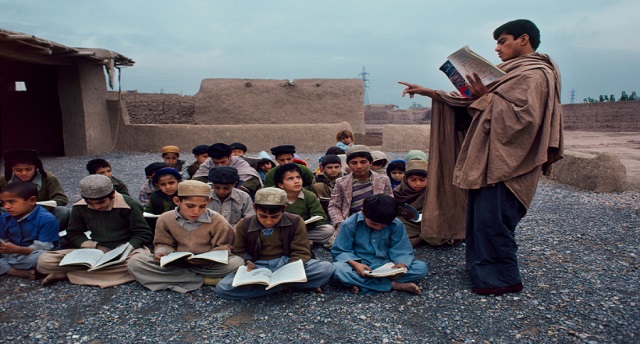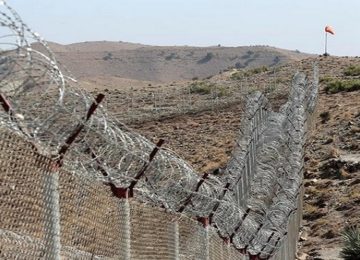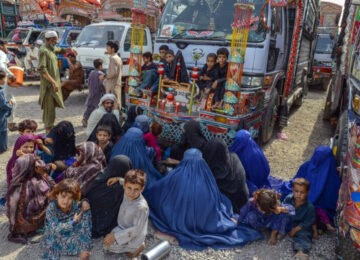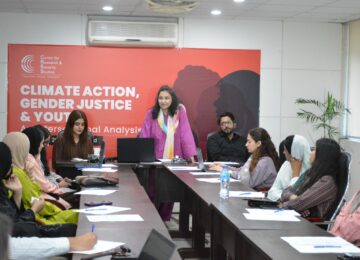January 03, 2018
The number of Afghan refugees arriving on Europe’s shores this year was significantly lower than in 2015 and 2016, but the arrivals have not stopped. In 2017, there were still a few thousand Afghans making the hazardous trip across the Mediterranean to the continent, and tens of thousands more continued to be on the move inside Europe. AAN’s Thomas Ruttig looks at some of the trends in Afghan-European migration in 2017 and concludes that the decrease in numbers coming to Europe is mainly a result of policy changes there vis-à-vis asylum seekers, not of the war in Afghanistan or the socio-economic problems related to it subsiding.
Currently, there are three main Europe-related groups of Afghan refugees, each facing different problems. First, there are those who see themselves as compelled to flee an Afghan war that continues to escalate both in intensity and scope (see AAN analysis here). The number of Afghans currently leaving the country is not known, though. Indications for the intensification of war are the number of security-related incidents; the increasing number of conflict-related Internally Displaced Persons (IDPs) (over 400,000 Afghans were newly displaced in 2017 by 17 December, according to the UNHCR; growing numbers of civilian casualties and losses of the Afghan armed forces; the extension of Taleban territorial control and influence (read more here). AAN guest author Bill Byrd pointed out in this recent AAN dispatch that, based on World Bank figures, Afghanistan’s economy suffered an enormous shock when most western troops withdrew by the end of 2014 and the associated “massive reduction” in military expenditure in the country. Economic growth fell sharply. Combined with a rising population, that meant the Afghan economy “has essentially been ‘running in place’ with no gain in average per-capita incomes.”
Despite the lack of data, it can be assumed that only a small proportion of those Afghans still leaving the country have been able to move into Europe, as entry has become more hazardous. Alternatives are to join the millions of their countrymen and women still living in neighbouring Pakistan (read AAN analysis here) and Iran, although there pressures to return are high, too, to venture to the Gulf countries or Turkey for work, or chose more dangerous, or costly, ways to destinations more afield.
Secondly, there are the so-called “stuck refugees,” a term that has been adopted widely in refugee studies. These are several large groups of Afghans who already are in Europe but ‘came too late’ in 2015/16 to make it into the European Union countries in central and western Europe which most had been hoping to get to, such as the UK, Germany, France or Scandinavian countries. Most of these refugees are currently stuck at or between EU borders in Turkey, Greece, Italy, Serbia and Bulgaria. Most wanted to avoid applying for asylum where they currently are, but border closures, combined with local pressure to claim asylum or leave, has forced them to rethink. (AAN has extensively reported about some of these groups, see in our 2017 dossier and more details below.)
Thirdly, there are those already in their destinations of choice in Europe where apparently most of them, by now, have submitted their asylum requests (see figures below). More and more Afghan cases are now being processed in Europe. In a number of European countries, including Germany, the one that received the largest number of refugees in general and Afghan refugees in particular, cases of Afghans had been de-prioritised by the authorities as ‘more difficult’ to decide upon. Now, the backlog is being tackled. Those rejected or still waiting for their asylum decision are facing increased political and administrative pressure to return to their country of origin.
In the meantime, refugees generally and in some cases certain refugee groups in particular have lost rights they had enjoyed as a result of host country governments tightening asylum laws. As humanitarian organisations have repeatedly reported, these pressures have led to a situation in which even legal rights are repeatedly being denied. This has particularly made Afghans “second class” asylum seekers in several European countries, as reported by AAN from Germany (for similar development in Sweden here and in Austria here). (We come back to this.)
Afghan communities in in several European countries have grown as a result of the refugee crisis. [Added 1 Jan 2018: Germany, for example, had registered 48,622 Afghan asylum seekers in 2015 and 154,046 in 2016, read here, p4.] In total, it hosted almost 255,000 Afghan nationals in 2017, according to latest official figures from February 2017 given to German parliament. (There were some 126,000 in 2009.) Only 6.4 per cent of them have been given the right to stay permanently, with another 24.8 per cent given a temporary right to stay. This means that seven out of ten Afghans in Germany live under precarious circumstances, either still waiting for a decision or already rejected, with most of the latter being prevented from deportation on humanitarian grounds.
As we have looked intensively at the second group in earlier dispatches, we will concentrate here on the first and third groups.
Death at sea and on land
A number of recent cases have demonstrated the high human cost of the new measures aimed at keeping out Afghan and other asylum-seekers, and that conflict-related Afghan migration to Europe has not stopped.
One case that has been extensively reported in the media (see a Guardian article here and one by AFP here) is that of a six year-old Afghan girl who was hit and killed by a train while trying, with family members, to cross the border between Serbia and EU member-state Croatia in the night of 20 November 2017. In contrast to many refugees losing their lives on their way to Europe, this girl did not remain anonymous.
Her name was Madina Husseinkhel (both The Guardian and AFP misspelled the surname) and she was one of ten children of Pashtun parents. They originated from Musayi district, in the southeast of Kabul province, and later lived in the capital Kabul. Her father, Rahmat Shah Husseinkhel, who was not present when the accident happened, claimed he had worked with the US-supported Afghan Local Police in Gardez, and that the family had to flee because he was threatened because of this job. According to what they told AAN, they left Afghanistan in late spring of 2015. On their way to Europe the family became a typical case of “stuck refugees.” After spending three months in Turkey, they paid a smuggler to bring them all the way to Germany (they later changed their story, telling some media that they wanted to go to London). Either way, the smuggler cheated them and dropped them in Bulgaria. Without money, they lived for eight months in a reception centre in the capital Sofia, moving on to Serbia where they spent another ten months trying to use the legal way to cross into Hungary which has a daily, but very small quota, particularly for families. Finally, the family was split, with the mother and six children ending up in Tutin camp in the Muslim-majority southern Serbian region of Sandžak while the father and four more children were in the Serbian capital, Belgrade.
In this situation, they told AAN, they heard rumours that it had become possible to cross the Serbian-Croatian border again, ie making it into the EU, and the father told the mother to go ahead and try, as there was not enough money for all of them to travel. (They had to pay another smuggler, an Afghan, who helped them cross, reportedly using GPS data.)
Some hours after crossing into Croatia, the mother said she and six children were resting in a park when they spotted Croatian police and approached them to claim asylum. But instead of filing them into the asylum procedure, the seven were put in a van, driven back to the border and shown the way across, which led across some elevated railway tracks. That was the place where, in the middle of a night, Madina was hit by a train.
The Croatian authorities claim the family had never reached the country’s territory. According to a local media report, they say that after the accident occurred, the mother handed over Madina’s body, which was taken to a hospital where the girl’s death was confirmed. The mother, meanwhile, had voluntarily returned to Serbia. The body was handed over to the family only four days later, after Serbian authorities and NGOs stepped in, and buried on a cemetery in the Serbian border town of Šid.
The Guardian, however, wrote that “multiple aid and human rights groups have documented hundreds of cases of people with a legal right to claim asylum being forced back over EU borders in Croatia, Hungary and Bulgaria, frequently with the use of violence.” At the start of this year, the French organisation Médecins du Monde had raised warnings about the use of “beatings, pepper spray and dog attacks” in what are referred to as ‘forced pushbacks’. Other organisations reporting such cases were Human Rights Watch, the Croatian non-governmental organisation called Are you Syrious and the German Heinrich Böll Foundation (HBF). HBF said the push-backs by Hungarian and Croatian police to Serbia had been mainly directed against Afghan and Pakistani refugees, mainly male adults, since 2016, but that cases involving unaccompanied minors increased in 2017. These reports also include a number of cases where refugees had been ordered back along the train tracks where Madina died.
As other graves besides that of Madina’s on the Šid cemetery demonstrate, she was not the first Afghan who died at that stretch of the border, be in from accidents or other causes.
The Serbian NGO Belgrade Centre for Human Rights also reported:
A fifteen-year-old unaccompanied boy from Afghanistan was killed in a tragic accident on the highway near the Reception Centre in Adaševci on 23 June, while his 13-year-old friend, who was seriously injured, was taken to the hospital. The accident reportedly occurred when the two boys jumped out of a moving truck when they realised it was heading towards Belgrade rather than Croatia.
In another distressing case reported by Austrian media, a 12 year-old Afghan boy committed suicide on 12 November 2017 in the city of Baden, just outside the capital of Vienna. According to one Austrian news website, the boy had been caught shop-lifting a day earlier and feared he might be punished by deportation; he had reportedly stolen goods valued at less than six Euros.
On 26 November 2017, another Afghan child, a ten year-old Afghan boy, was crushed to death on a boat with 67 refugees from different nations while trying to cross the narrow strait between the Turkish coast and the Greek island of Lesbos. As Greek media reported (quoted here), panic had broken out on board the boat when a patrol vessel of the European border agency Frontex approached it. The boy, whose name was not reported, was travelling with his parents and two younger sisters. When the mother realised the boy was dead, she jumped into the water, but was rescued. The case also made it into Afghan media.
After this incident, the United Nations’ migration agency IOM called the Mediterranean “by far the world’s deadliest border,” with, according to UNHCR, more than 33,000 people having died on this route trying to reach Europe since 2000. This year, up to 20 December, 3081 people were dead or missing.
Official numbers of Afghans among the Mediterranean casualties are not available. In May 2017, however, UNITED for Intercultural Action, an artists’ initiative, published a list of 33,293 “registered asylum seekers, refugees and migrants who, because of the restrictive policies of Fortress Europe came to death” between 1993 and 15 June 2017 compiled from public sources. Where possible, the group included the names and countries of origin of the dead. The list includes 109 cases with altogether 285 Afghan casualties and another 34 cases (often involving multiple deaths) that included Afghans among casualties of other nationalities, but with no exact breakdown by nationality. 116 of these cases happened before 2015.
While 1.36 million refugees of all countries of origin arrived in Europe in 2015 and 2016, according to the UNHCR (here and here), the 2017 figure was much lower, at almost 169,000 by 20 December, according to the UN. The data are complied at the Mediterranean, the major entry ‘point’ – other figures, such as direct arrivals by air, are insignificant in comparison.
Unlike 2015 and 2016 when they were the second-largest group, in 2017, Afghans were not any longer among the ten countries, from which most refugees crossed the Mediterranean. This is mainly due to the increase of North and Sub-Saharan Africans crossing to Italy and Spain in the western and central Mediterranean, while the routes in the eastern Mediterranean – between Turkey and Greece – have been sealed off more effectively. On this particular route, the total number of arriving refugees was down to under 29,000 by 17 December 2017, according to UNHCR figures. Among them, however, Afghans were still ranking third, with 3136 individuals, representing 11.5 per cent of all arrivals. 2015 and 2016 still had seen much higher absolute figures, namely 209,367 and 42,262, respectively (see here and here).
The total number of asylum claims in Europe dropped from 1,325,800 (2015) and 1,236,400 (2016) to 473,600 by the end of September, according to the latest UN statistics. (The discrepancy between the still high number of asylum requests and the decreased number of arrivals comes from the fact that many earlier asylum seekers either did not get the immediate chance of formally requesting asylum – the first registration is not identical with this, even if the express their wish to claim – or chose not to claim, mainly if they have not yet arrived in their country of choice.)
According to the latest available EU statistics (here and here), there were 32,400 new asylum claims of Afghans all over Europe in the first three quarters of 2017. If the trend also held in the last quarter of the year, figures would be back at pre-2015 levels when, according to a report (pp 46-9) of the EU’s European Asylum Support Office (EASO), their numbers “never exceeded 43 000 applicants on a yearly basis.”
The highest figures for asylum seekers over the first three quarters of 2017 were reported in Germany (11,895), Greece (5610), France (4555) and Austria (2430). Switzerland had 1100, Hungary 1085, Sweden 960, Bulgaria 920, Belgium 630 and Slovenia 470. The UK had 995 (only first and third quarter; Afghans not among the five largest group in between) and the Netherlands probably also had three-digit figures. Four other countries featuring Afghans for the first time among the five largest groups claiming asylum in the third quarter of this year, although the actual numbers of asylum seekers were relatively small: Romania (with 110), Croatia (35), Finland (60) and Norway (35) (see here, here and here).
Also here the total figures reflect a significant drop. According to the EASO report already quoted above which looked at EU and four non-EU countries (Iceland, Liechtenstein, Norway, Switzerland) “recorded 190,240 Afghan applicants for international protection” in 2016, a three pre cent decrease compared to 2015 (ie ca 196,100 in total). In both years, Afghans remained the second largest nationality of claimants. In 2017, they were the third largest group.
According to the EU statistics quoted above, authorities took decisions in 81,200 Afghan asylum cases all over Europe in the first half of 2017. In 48 per cent of the cases, a form of protection was granted. This represents a significant drop from 2015 and 2016 when recognition rates were on average at 66 and 56 per cent respectively, according to EASO, with the rate varying between 2 per cent (Bulgaria) and 97 per cent (Italy) in individual European countries.
The country with the largest number of Afghan asylum seekers, Germany, has already published its own figures for up to the end of November 2017. By then, the number of Afghan asylum claims had risen to 15,521 since the beginning of the year. While they still represented the third largest group among all asylum seekers with 8.4 per cent – after Syrians and Iraqis –, their total number was down by almost 90 per cent compared to the same period in 2016; [but still above the ]. Its most detailed publicised asylum statistics, however, do not contain any other breakdown – such as according to age, gender or home province – for the individual countries of origin (see the November 2017 issue here).
According to official German figures, there were 11,482 new Afghan arrivals by 30 November 2017 to the country. Note: this figure is not identical with the number of asylum seekers in the same period, as the latter group includes people who arrived before 2017, but had not had the chance to officially claim asylum or have chosen not to so far.
The new Afghan asylum seekers in Germany seem to belong to four groups:
- refugees who entered from other EU countries where they might, or might not, have been registered or even officially claimed asylum. (If they had, this would make them ‘Dublin cases’, ie Germany has the right to send them back to the first EU country they entered. This is not happening in the majority of these cases);
- new arrivals from the groups stuck in Greece or Serbia (with the same consequences as in group one) – more about these people below;
- direct entries by airplane (with forged papers);
- refugees who might have been in Germany for a longer period but had avoided claiming asylum before, for different reasons.
Experts in refugees support organisations in Germany told AAN to assume that the group mentioned first is the largest one, while those entering directly by air (which requires well-forged documents that are expensive) seems to involve only a few cases.
By 30 November 2017, Germany had decided more than 112,000 Afghan asylum cases, with a protection quota of 44.4 per cent (47.5 per cent, if Dublin cases are excluded). The number of not yet decided Afghan cases has been drastically reduced from 94,979 in June 2016 and 26,986 in July 2017 to 9376 at the end of November.
“Stuck refugees” in Turkey and Greece
Kept back by the Turkey-EU deal, Afghans had become the second largest group of refugees in Turkey by 2017. In October 2017, UNHCR counted 151,440 Afghans among the total of 3.6 million refugees (there were 3.3 million Syrians, see here). The UN refugee agency said that among the 71,233 non-Syrian asylum seekers newly registered in 2017 by the end of September, Afghans were the largest group. As no exact figures were available, possibly several tens of thousands of new Afghans came to Turkey in 2017, some of whom likely with the wish to travel onwards to Europe, as the number of Afghans crossing to Europe given above indicates. (There were no incoming Afghans registered by UNHCR in Italy and Spain.)
For Greece, it is estimated by non-governmental organisation that there are currently some 62,000 “stuck refugees”. Officially, there were 49,000 registered by the beginning of December 2017, with Afghans being the second largest group. According to estimates by migration experts in the country whom AAN spoke to, there are between 10,000 and 15,000 Afghans.
Living conditions of these refugees have deteriorated significantly. Most are living in camps, with limitations imposed on their mobility in contradiction to EU legislation. In Moria camp on Lesvos Island (which had been the destination of the Afghan boy killed in the boat stampede on 26 November), according to Greek media reports, clashes “between Arab, Afghan and Iraqi [sic] refugees” broke out on 20 December 2017. This came just one day after other media had reported“squalid conditions” in the camp which was designed for 2,000 people – and only for the initial registration of newcomers, not for permanent accommodation – but is now inhabited by up to 7,000 people, between 300 to 350 of them unaccompanied minors. In November 2017, as a member of the European Parliament reported, 1,500 of them had to live in unheated tents.
The riots were not the first ones, as The New Yorker recently reported. The situation in the camp had already led to clashes between “Afghan and Arab residents” in October. According to this report, hundreds of Afghans, including many families, then fled the camp and refused to move back in, fearing for their safety. They marched to the island’s capital, Mytilene, where they erected a protest camp at its central square.
Equally appalling conditions have been reported from Elliniko camp, the now defunct former international airport of Athens, with up to 700 inhabitants, almost all of the Afghans. In May, NGOs providing medical care, clothing, legal advice, translation and other services had reportedly been withdrawn from there, and WiFi, electricity and water services were cut off. Residents were told to accept transfers elsewhere or lose support, the IRIN news agency reported. In November 2017, the camp still existed, with aid only arriving for a few days at a time, as reported here, despite the Greek government having transferred 2000 refugees from Lesvos and another island to the mainland.
In November 2017, 20 international human rights and aid groups active in Greece wrote an open letter to the country’s prime minister, Alexis Tsipras, urging him to end Greece’s “containment policy” which, they said was being implemented “in response to the EU-Turkey deal.” They added, “The EU-Turkey deal is condemning refugees and migrants to a second winter in squalor on the Greek islands.” It was, they said, “a matter of life and death.”
The other side of this coin is that a majority of EU countries have so far not lived up to their commitments under the EU-Turkey deal to accept asylum seekers from Turkey in exchange for Turkey’s willingness to take back asylum seekers from Greece who crossed into the EU after the deal’s cut-off date (see July 2017 EU figures here). This keeps the migration pressure on Greece particularly high.
In June 2017, AAN reported that there were several thousand Afghans stuck in Serbia. By 3 December 2017, another 2,300 Afghans had come into the country, according to UNHCR. (In 2016, there had been almost 5,600 Afghans, see here.) Of the 2300 who arrived in 2017, 1,041 had come from Macedonia, most likely from Greece, others from Bulgaria, some from Albania or Kosovo and a few directly by airplane. By November 2017, Afghans represented an absolute majority of all migrants present in Serbia (57 per cent, see here), slightly down to 49 per cent in December 2017.
Only a small number of Afghans request asylum in Serbia, however, as this is discouraged by the authorities. In 2016, only 42 people of any nationality were given any form of protection; they included only one Afghan given asylum and five others given subsidiary protection (which is less than full refugee status) – out of 187 Afghans requests (see here). In 2017, by August, protection had only been granted in two cases, one of them Afghan (see here).
In late December, a group of around 150 refugees, “mostly from the Middle East,” protested at the Tovarnik border checkpoint between Serbia and Croatia, four kilometres away from the city of Šid. They urged the Croatian authorities to let them in, according to local media (read here and here). They were forcefully removed by Serbian police after two days on 27 December. Authorities accused “anarchists and volunteers” of steering the protest.
New Afghan asylum seekers are also making their way to Bulgaria, either from Turkey (newly into Europe) or from Serbia, seeking a more eastern way forward to Romania and Hungary. Figures for those reaching Bulgaria have been dropping, as AAN research has shown. The only figures available were those of “illegal in-migrants” detained by police, some 2,600 by 31 October 2017 (including 1,050 Afghans). The total number of illegal migrants detained from all countries of origin were over 34,000 in 2015 and almost 19,000 in 2016.
In 2017, Bulgaria erected more fences along its Turkish border, forcing some refugees to use a new sea route, from Turkey across the Black Sea, either to Bulgaria or Romania.
[Amendment 1 January 2018: German broadcaster Deutsche Welle has just reported about a group of refugees, including Afghans and Pakistani, who made it to Bosnia-Herzegowina, no numbers given. One Afghan is quoted in the text that he plans to stay in that country.]
Tightened laws in Europe
Various European countries have further tightened their asylum laws or are planning to do so. For example the new centre-right government in Austria, as local media reported, has decided in its programme that:
asylum seekers will have to hand over any cash money they are carrying upon arrival; this will be used to cover the costs of asylum cases;
asylum seekers will not receive cash hand-outs anymore, but only in-kind food and other aid;
they will have to submit their mobile phones so that authorities can check their personal data and social media accounts;
the children of asylum seekers cannot attend regular schools anymore, as long as their cases are in the decision-making process;
doctors’ obligation to confidentiality will be lifted in some cases;
deadlines for appeal will be shortened, even though Austria’s constitutional court had ruled, in October 2017, that such a measure taken by the previous government was unlawful.
As the Austrian mainstream daily Der Standard, from which the above information is summarised, commented, the clause about asylum seekers’ children being separated from the regular education system would “take away an integrative effect – but possibly this is an intended effect.”
The planned new German coalition government of the conservative Christian Democrats, the neoliberals and the Green party (that in the end did not come together) planned measures to move decision-making on asylum cases generally to the EU’s outer borders, ie totally away from Germany. It also wanted to increase the number of “deportation centres” that are already in use in the state of Bavaria. Before that, the still acting German government abolished the right for family reunification for refugees that received “subsidiary protection” only, which is the category in which most Afghan (and now also Syrian) refugees end up. Afghans continue to be considered as a group with a “low chance of stay”, due to the protection rate of under 50 per cent. (The rates for Syrians, Eritreans, Somalis and Iraqis are over 50 per cent.)
Furthermore, there are several reports of unlawful deportations of Afghans from European countries. Germany had to fly back a 23-year old man from Afghanistan in mid-December 2017 who had been deported to Bulgaria as a ‘Dublin case’ in mid-September, and from there – under beatings – on to Afghanistan. Bulgarian authorities claim he left voluntarily. The authorities of the German city of Tübingen had ordered the deportation although the man’s lawyer had appealed against it and the court had not yet decided the appeal. To correct this, the German government decided to give him a visa to return; there will be another court decision about the validity of his asylum claim though, weekly Die Zeit reported.
In Finland, a 19-year old Afghan named Zaki Hussaini was deported to his country in July 2017 while his case was also still pending and just hours before the court actually ruled that he was entitled to stay. The police and immigration authorities, however, claimed that they followed the standard procedures, as Finnish media reported. AAN did not find out whether this case has been corrected, too.
Causes of flight continue to exist
Although the numbers of Afghan refugees arriving in Europe and of Afghans applying for asylum have dropped significantly, this development is not a result of prospects in Afghanistan improving but mainly of the securitisation of asylum policies in Europe. Policy changes have included the re-introduction of sharp border controls, both at the external and internal EU borders. Two measures had the most significant impact, the closure of the western Balkan route and the so-called EU-Turkey deal (AAN reporting here). Tightened asylum laws in several European countries have had repercussions on Afghans in particular.
The Afghan war is escalating further both in intensity and scope (see also AAN analysis here) and continues to produce refugees, including large number of IDPs, but also refugees in the sense of official governmental use – those crossing the border of their country of origin to flee. Tens of thousands of Afghans are still on the way to Europe or stuck at its borders, living under increasingly precarious conditions. The same is true for rejected Afghan asylum seekers in a number of European countries.
By Special Arrangement with AAN. Original link.
Disclaimer: Views expressed on this blog are not necessarily endorsed or supported by the Center for Research and Security Studies, Islamabad.








